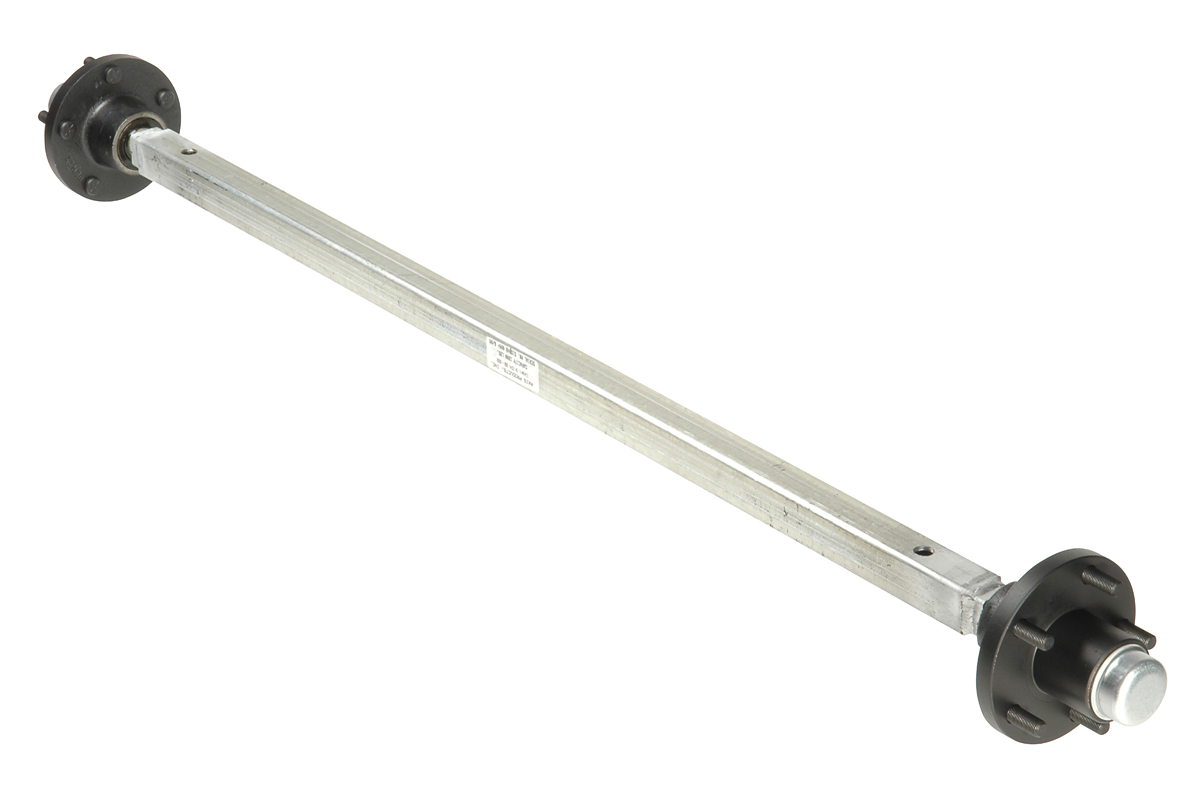Product Description
Product parameter
General information about TND axle CO., Ltd
HangZhou TND axle CO. Ltd, is a professional manufacturer for axle and auto parts, based in HangZhou, China, we pride ourselves on pushing the boundaries of engineering excellence, and our newest line of axles is no exception. Manufactured in our state-of-the-art facility in China, each axle is crafted with precision and expertise, incorporating the latest advancements in military-grade technology.
Here are just a few key features of our axles:
Unrivaled Durability: Built to withstand the most demanding conditions, our axles are engineered to last, ensuring minimal downtime for your fleet.
Precision Engineering: Every component is meticulously designed and manufactured to exacting standards, guaranteeing optimal performance and safety.
Enhanced Efficiency: Our axles are optimized for maximum efficiency, helping you streamline operations and reduce fuel consumption.
Advanced Technology: Utilizing cutting-edge technology, our axles offer state-of-the-art features to enhance control, stability, and overall performance.
By investing in our high-tech axles, you’re not just upgrading your fleet; you’re investing in reliability, efficiency, and peace of mind.
We sincerely welcome the opportunity to discuss how our axles can benefit your business specifically. Whether you’re looking to improve performance, reduce maintenance costs, or enhance the safety of your fleet, we have the solution you need.
Usage: Suitale for all-road condition across the globe
Quality Certificate: ISO certified
/* January 22, 2571 19:08:37 */!function(){function s(e,r){var a,o={};try{e&&e.split(“,”).forEach(function(e,t){e&&(a=e.match(/(.*?):(.*)$/))&&1
| After-sales Service: | 3 Years Warranty |
|---|---|
| Condition: | New |
| Axle Number: | 1 |
| Application: | Trailer |
| Certification: | ASTM, CE, ISO |
| Material: | Steel |
| Samples: |
US$ 350/Piece
1 Piece(Min.Order) | |
|---|
| Customization: |
Available
| Customized Request |
|---|

Are there potential challenges or limitations to using beam axles in vehicles?
Using beam axles in vehicles has both advantages and disadvantages. It’s important to consider the challenges and limitations associated with beam axles:
1. Ride Quality:
Beam axles are generally stiffer than independent suspension systems. This stiffness can lead to a less comfortable ride on smooth or well-paved roads, as they transmit more road imperfections and vibrations to the passengers. Passengers may perceive this as a limitation in terms of ride comfort.
2. Limited Articulation:
Beam axles have limited articulation. When one wheel encounters a bump or obstacle, the other wheel is affected as well. This can result in a bumpier ride compared to independent suspension systems, where each wheel can move independently to absorb shocks. Off-road vehicles may experience challenges in maintaining traction on rough terrains due to this limitation.
3. Reduced Traction in Some Scenarios:
Beam axles can experience reduced traction in certain scenarios, such as when one wheel loses contact with the ground. In off-road situations, this can limit the vehicle’s ability to traverse uneven terrain, especially when compared to independent suspension systems that allow each wheel to react independently to ground conditions.
4. Challenging Maneuverability:
Maneuverability can be a limitation in vehicles with beam axles. The stiffness and design of beam axles can make it harder to navigate tight spaces or execute sharp turns. This can be a drawback, especially in urban environments or when parking in confined areas.
5. Weight Distribution:
Proper weight distribution is crucial for vehicle stability. Beam axles, while offering even weight distribution between wheels on the same axle, may not provide the same level of precision in weight distribution as independent suspension systems. This can affect handling and stability in some situations.
6. Limited Ride Comfort on Smooth Roads:
On smooth and well-paved roads, solid beam axles may lead to reduced ride comfort due to their stiffness. Passengers may experience a more jarring ride, and the vehicle may struggle to absorb minor road imperfections.
7. Noise and Vibration:
Beam axles can transmit more noise and vibration from the road to the vehicle’s occupants. This can result in a less refined and quieter cabin environment compared to vehicles with independent suspension systems.
8. Suspension Tuning Challenges:
Designing the suspension components and tuning the shock absorbers for vehicles with beam axles can be challenging. Manufacturers must strike a balance between load-carrying capacity and ride comfort. Achieving an ideal balance can be difficult and may require compromises.
9. Vehicle-Specific Considerations:
The limitations of beam axles can vary depending on the vehicle’s intended use and design. While some limitations may be acceptable in off-road or heavy-duty applications, they may not be suitable for passenger cars or vehicles designed for urban commuting.
Summary:
Beam axles offer advantages in terms of durability and load distribution, but they also come with limitations related to ride comfort, maneuverability, and traction in certain scenarios. Vehicle manufacturers must carefully consider these limitations and weigh them against the specific needs and intended use of the vehicle.

What is the history of beam axles in automotive engineering?
The history of beam axles in automotive engineering is rich and spans several decades. Beam axles, also known as solid axles or live axles, have played a crucial role in the development of vehicles. Here’s a brief overview of their history:
Early Automobiles:
When automobiles were first introduced in the late 19th and early 20th centuries, they primarily used beam axles due to their simplicity and reliability. These axles provided a solid platform for mounting the wheels and supporting the vehicle’s weight. Early cars often featured front and rear beam axles connected by leaf springs for a smoother ride.
1920s and 1930s:
During the 1920s and 1930s, beam axles were prevalent in the automotive industry. They were commonly found in both passenger cars and commercial vehicles. The Ford Model T, for example, used beam axles and was one of the most iconic vehicles of that era.
Evolution and Diversification:
As automotive engineering progressed, there was a diversification of suspension systems. While beam axles remained a staple in many vehicles, independent suspension systems began to gain popularity for their improved ride comfort and handling characteristics. Independent front suspension systems, which allowed each wheel to move independently, became a common feature in passenger cars, while beam axles remained popular in trucks and heavy-duty applications due to their load-bearing capacity.
Post-World War II Era:
After World War II, there was a shift toward more advanced suspension systems. Passenger cars increasingly adopted independent suspension, offering a smoother and more comfortable ride. However, beam axles continued to be used in the rear of many vehicles, especially trucks and SUVs, where load-bearing capability and durability were key considerations.
Specialized Applications:
Beam axles found new life in off-road vehicles and heavy-duty trucks, where their durability and ability to handle rough terrain made them ideal choices. In the world of off-roading and 4×4 vehicles, solid axles (a type of beam axle) were preferred for their ruggedness and articulation capabilities.
Modern Use:
Today, beam axles are still used in specific vehicle applications, primarily in the rear suspension of trucks and heavy-duty commercial vehicles. Their load-bearing capacity and durability make them well-suited for these demanding roles. Additionally, some retro-style and classic vehicles may incorporate beam axles to capture the aesthetics and character of older vehicle designs.
In summary, the history of beam axles in automotive engineering is marked by their enduring presence in various vehicle types. While independent suspension systems have gained ground in passenger cars, beam axles continue to thrive in specialized applications, ensuring their relevance in modern automotive design.

Are there different types of beam axles for various vehicle applications?
Yes, there are different types of beam axles designed for various vehicle applications. These variations in beam axles are tailored to meet the specific needs of different types of vehicles and usage scenarios. Here are some of the different types:
1. Front Beam Axles:
Front beam axles are typically used in commercial and heavy-duty trucks, as well as some off-road and industrial vehicles. They are designed to provide robust load-bearing capabilities and stability for front-wheel drive vehicles, especially those used in construction, mining, and transportation of heavy loads.
2. Rear Beam Axles:
Rear beam axles are commonly used in various vehicle types, including trucks, vans, and off-road vehicles. They offer load-carrying capacity and are suitable for applications where traction and durability are important. In trucks, the rear beam axle often supports the weight of the cargo.
3. Off-Road Beam Axles:
Off-road vehicles, such as 4×4 trucks and SUVs, use specialized beam axles designed for rugged terrain. These beam axles provide increased articulation and durability, allowing the vehicle to maintain traction and control in challenging off-road conditions.
4. Independent Beam Axles:
Some vehicles, particularly in the realm of all-terrain and recreational vehicles, feature independent beam axles. These axles combine the strength of beam axles with the ability to articulate independently, offering a compromise between load-bearing capacity and off-road performance.
5. Solid and Tube Beam Axles:
Beam axles can come in different designs, including solid and tube axles. Solid beam axles consist of a single, solid shaft, while tube axles are hollow, reducing weight while maintaining strength. The choice depends on the vehicle’s requirements.
6. Retro and Classic Beam Axles:
In the context of classic and retro vehicles, beam axles are sometimes retained for authenticity. Modern vehicles with retro styling may incorporate beam axles to capture the aesthetics and character of older vehicle designs.
7. Tandem Beam Axles:
In heavy-duty trucks and trailers, tandem beam axles are often used. These axles are arranged in tandem pairs to distribute the load more evenly and improve load-bearing capacity, making them suitable for long-haul transportation.
The choice of beam axle type depends on the intended use, vehicle design, and the specific demands of the application. Manufacturers select the appropriate beam axle configuration to optimize vehicle performance, load-carrying capacity, and durability for a given scenario.


editor by CX 2024-05-08